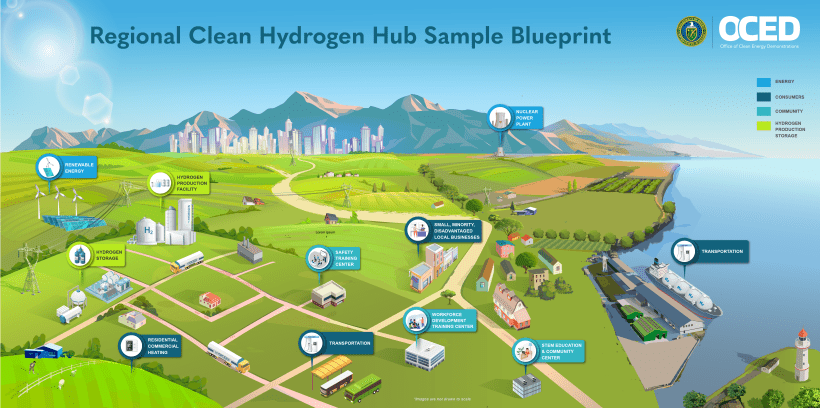Empowering the Energy Transition: U.S. DOE Launches $7 Billion Hydrogen Initiative
Key Ideas
- The U.S. DOE announced a $7 billion initiative to establish seven Regional Clean Hydrogen Hubs to promote the use of clean hydrogen, crucial for the energy transition and meeting carbon goals.
- EPRI's research focuses on integrating hydrogen into natural gas power plants to reduce carbon emissions incrementally, ensuring safety, and outlining best practices for stakeholders.
- Findings from EPRI's analysis of hydrogen-natural gas co-firing demonstrations show no adverse environmental impacts, with emissions comparable to natural gas and enhanced safety protocols in place.
- Best practices for co-firing hydrogen and natural gas include early identification of standards, collaborative project teams, comprehensive safety measures, and strategic sensor placement for leak detection.
In a move to accelerate the energy transition and address growing demands for reliable power, the U.S. Department of Energy (DOE) unveiled a $7 billion initiative to establish seven Regional Clean Hydrogen Hubs. This initiative aims to scale the use of cost-effective clean hydrogen, which plays a crucial role in helping utilities meet increasing power demands while adhering to net zero carbon goals. As more companies pledge carbon neutrality, hydrogen emerges as a versatile tool for balancing demand growth with sustainability efforts.
The Electric Power Research Institute (EPRI) is actively involved in research to integrate hydrogen into natural gas power plants, aiming to reduce carbon emissions gradually while ensuring safety and environmental standards. EPRI's recent report on hydrogen-natural gas co-firing demonstrations analyzed projects across the U.S. and highlighted key environmental and safety findings. The analysis showed that hydrogen did not increase nitrogen oxide emissions, and safety concerns, including leaks, were effectively addressed through industry protocols and codes.
EPRI's best practices for co-firing hydrogen with natural gas emphasize the importance of early identification of standards, collaborative project teams, and comprehensive safety measures such as reliable fuel blending controls and emissions monitoring. These practices aim to guide future projects and accelerate the use of hydrogen in power sector decarbonization. The report serves as a roadmap for stakeholders interested in hydrogen combustion, emphasizing safety, environmental outcomes, and the role of hydrogen in achieving decarbonization goals.
Topics
Utilities
Energy Transition
Decarbonization
Power Sector
Safety Measures
DOE Initiative
Hydrogen-Natural Gas Blends
Latest News
